
If you have ever picked up a pencil and pondered how to get better at drawing, you are not alone. Drawing is a skill that may be improved with practice, patience, and a little direction. Whether you’re a newbie sketcher or want to enhance your artistic skills, the route to success is exhilarating. Consider this: each pencil drawing stroke is a step toward expressing your imagination on paper.
In this blog, we’ll discover useful strategies and approaches to help you improve your drawing abilities. This guide seeks to demystify the art of drawing by explaining the fundamentals of shapes and lines, as well as the magic of shading and perspective. Accept the delight of self-expression and watch as your artistic abilities improve So take your sketchpad, set aside any doubts, and start on a colorful journey of self-discovery. Let’s discover the secrets of how to improve your sketching skills one stroke at a time!
How to Get Better at Drawing: Step-by-Step
These issues may stem from a lack of fundamental abilities that are overlooked when learning to draw pictures. These skills are obvious to someone who has spent a lot of time drawing, but they can be easily forgotten after a few years without a pencil in hand. Are you ready to catch up on the greatest easy drawings exercises for beginners?
1. Study Anatomy
- Importance: A profound understanding of anatomy forms the bedrock for creating realistic art, particularly when depicting the human or animal form. Mastery of anatomy ensures that your drawings or paintings accurately portray the structure and movement of living beings.
- How to Study: Begin with foundational anatomy, understanding skeletal structures and major muscle groups. Learn how bones and muscles interact during various movements. Utilize anatomy reference books, and online resources, and even attend life drawing ideas sessions to observe live models. These experiences provide dynamic insights into the complexities of the human body
- Apply in Artwork: Apply your anatomical knowledge to create more realistic figures. Consider the underlying skeletal structure when sketching or painting, allowing for accurate proportions and positioning of limbs. Understand the nuances of muscle definition and how it changes with movement and light. This knowledge enhances your ability to portray realistic body contours and the play of light on the muscles.
- Practice Tips: 1. Start with simplified skeletal studies before progressing to more detailed musculature. 2. Break down the body into manageable sections for focused practice, gradually combining them for comprehensive understanding. 3. Regularly sketch or paint figures from different angles and in various poses to reinforce your grasp of anatomy.
- Example: If drawing a figure in motion, understanding the anatomy of the joints and muscles involved will enable you to accurately capture the fluidity and tension of the pose, resulting in a more lifelike representation.


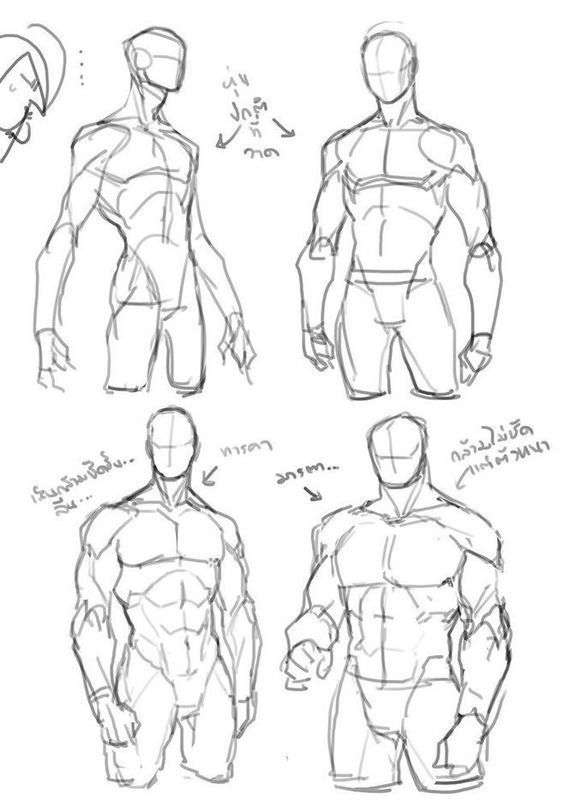
Thus anatomy is important in realistic art, as it provides the knowledge necessary to realistically depict human or animal form. This fundamental understanding supports precision, life-like movement, and high levels of realism in your pencil drawing.
2. Learn Proportions
- Importance: Mastery of proportions is fundamental for creating realistic pencil drawing. Accurate proportions ensure that the elements within your artwork relate to each other realistically, whether you’re drawing figures, objects, or scenes.
- Understanding Proportions: 1. Study the standard proportions of the human body, face, and features. Learn the relationships between different parts, such as the size of the head and the body or the placement of facial features. 2. Familiarize yourself with the concept of the “golden ratio” and how it can be applied to achieve visually pleasing proportions in your compositions.
- Practical Application: 1. When easy drawings figure, use guidelines to establish the proportions of the head, torso, arms, and legs. Pay attention to how these proportions change with different poses and perspectives. 2. Apply proportional principles to other subjects, such as still life or landscapes, to ensure that objects and elements are realistically sized and positioned to each other.
- Measuring and Comparing: 1. Develop techniques for measuring and comparing proportions while working on your art. This may involve using your pencil as a measuring tool or mentally breaking down the subject into basic geometric shapes to assess proportions. 2. Regularly check and adjust proportions throughout the creation process to maintain accuracy
- Practice Tips: 1. Dedicate specific practice sessions to drawing ideas or painting studies focused solely on proportions. 2. Experiment with different drawing techniques that aid in establishing and maintaining accurate proportions, such as the use of construction lines and grids.
- Realistic Portrayal: Achieving correct proportions ensures that your figures or objects appear natural and realistic. It contributes to the overall believability of your artwork, allowing viewers to connect more deeply with the imagery.
- Example: When drawing a portrait, understanding the proper proportions of facial features helps you avoid common pitfalls, such as eyes placed too high or a misaligned nose. This attention to detail results in a more realistic and lifelike representation.
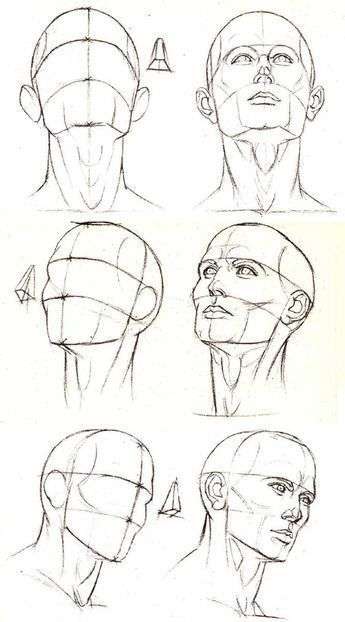
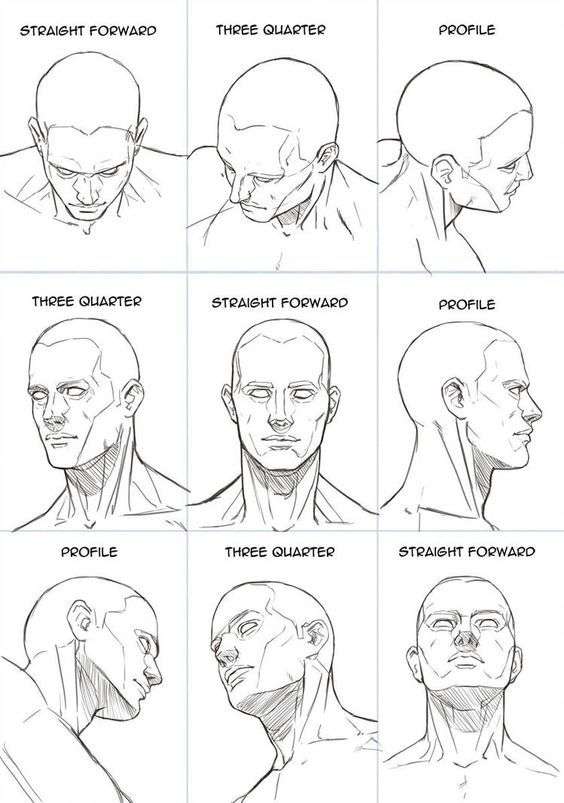
In summary, learning proportions is a foundational skill in pencil drawing, contributing to the accuracy and authenticity of your compositions. Whether drawing ideas, objects, or scenes, a solid grasp of proportions is crucial for creating art that resonates with viewers and conveys a sense of realism.
3. Explore Light and Shadow
- Importance: Understanding how light interacts with surfaces and creates shadows is crucial for achieving realism in art. Mastery of light and shadow enhances the three-dimensional quality of your artwork, adding depth, form, and a sense of realism.
- Study Light Sources: 1. Observe and analyze natural and artificial light sources. Understand how different light angles and intensities affect the appearance of objects. 2. Study the characteristics of direct light, diffused light, and cast shadows to accurately portray lighting conditions in your artwork.
- Experiment with Chiaroscuro: 1. Chiaroscuro, the use of strong contrasts between light and dark, is a technique often employed to create dramatic and realistic effects. Experiment with this technique to emphasize the volume and form of your subjects. 2. Practice rendering highlights, mid-tones, and shadows to create a more nuanced and realistic representation of surfaces.
- Understand Light Behavior: 1. Recognize how light behaves differently on various surfaces. Consider factors such as reflectivity, transparency, and texture when rendering objects under different lighting conditions. 2. Study the play of light on curved surfaces and how it contributes to the perception of depth.
- Application in Artwork: 1. Apply your knowledge of light and shadow when drawing or painting to enhance the realism of your subjects. Pay attention to the direction of light sources and the resulting cast shadows 2. Use shading techniques to create a sense of volume and three-dimensionality. Gradations in value contribute to the illusion of form and depth.
- Practice Tips: 1. Set up simple still-life arrangements with directional lighting to practice rendering light and shadow. 2. Analyze photographs or artworks with strong light and shadow elements to understand how artists effectively capture realistic lighting.
- Realistic Atmosphere: Mastery of light and shadow contributes to creating a realistic atmosphere in your art. It adds a sense of drama, mood, and believability, allowing viewers to connect emotionally with your creations.
- Example: When drawing a spherical object, understanding how light falls on its surface and creates highlights and shadows will make the object appear rounded and three-dimensional, enhancing the realism of the representation.



In summary, the search for light and shadow is an integral part of realistic art, affecting the perception of texture, depth, and atmosphere in your creations. Subtle understanding and skillful application of lighting principles will elevate your art, making it more visually appealing and truer to life.
4. Develop Patience
- Importance: Patience is a virtue that plays a significant role in artistic growth. The creative process often involves intricate details, repeated revisions, and the time-consuming task of refining one’s skills. Patience allows artists to persist through challenges and setbacks, fostering a mindset of continual improvement.
- Complex Artwork Takes Time: Realistic art, especially detailed or intricate pieces, requires time and precision. Developing patience is crucial when working on complex compositions, intricate details, or large-scale projects. Understand that achieving a high level of realism may involve numerous layers, delicate shading, and meticulous attention to fine details.
- Repetition and Skill Refinement: Patience is essential for the repetitive nature of artistic practice. Engaging in repeated exercises and studies contributes to skill refinement, allowing artists to gradually improve their techniques over time.. Accept that skill development is an ongoing process, and each piece, even if challenging, contributes to your growth as an artist.
- Handling Mistakes: Patience is a valuable asset when dealing with mistakes and imperfections in your artwork. Instead of getting frustrated, view mistakes as opportunities to learn and refine your skills. Taking the time to address errors thoughtfully, whether through corrections or starting anew, results in a more polished and refined final piece.
- Mindful Creativity: Patience encourages a mindful approach to creativity. Take the time to be present in each brushstroke or pencil mark. This mindful engagement enhances your connection with the artwork and contributes to a more thoughtful and deliberate artistic expression.
- Practice Tips: 1. Break down larger projects into smaller, manageable tasks to avoid feeling overwhelmed. 2. Establish a routine for practice, setting aside dedicated time each day or week. Consistency fosters patience and gradual improvement.
- Example: When working on a highly detailed portrait, patience is required to capture the subtleties of facial features accurately. Taking the time to observe, analyze, and render each element meticulously results in a more realistic and refined representation.

In summary, developing patience is a vital aspect of artistic growth. It allows artists to navigate the complexities of the creative process, persist through challenges, and approach their work with a calm and determined mindset, ultimately leading to improved skills and more refined artwork.
5. Analyze Masterpieces
- Importance: Studying and analyzing masterpieces is an invaluable method for artists to gain insights, inspiration, and a deeper understanding of artistic techniques. Examining the works of accomplished artists provides a wealth of knowledge that can be applied to one’s own artistic endeavors.
- Selection of Masterpieces: 1. Choose artworks from a diverse range of artists, styles, and periods. Analyzing both historical and contemporary masterpieces exposes you to a variety of techniques, perspectives, and artistic philosophies. 2. Select pieces that resonate with you personally, as this connection enhances the learning experience.
- Observe Techniques and Style: 1. Pay close attention to the technical aspects of the artwork, including brushwork, use of color, composition, and texture. Analyze how the artist achieved certain effects and consider how you can incorporate similar techniques into your own work. 2. Identify the artist’s unique style and how it contributes to the overall impact of the masterpiece.
- Composition and Design: 1. Examine the composition of the artwork. Analyze how the artist arranged elements within the frame to create balance, harmony, and focal points. 2. Consider the use of leading lines, framing, and perspective to guide the viewer’s gaze through the composition.
- Scale and Proportion: Analyze the scale and proportion of objects within the artwork. Consider how the artist manipulated these elements to convey a sense of space, depth, or emphasis. Pay attention to how the artist may have distorted or exaggerated proportions for stylistic or expressive purposes.
- Application in Your Own Art: 1. Apply the insights gained from your analysis to your own artistic practice. Experiment with incorporating observed techniques, styles, and concepts into your work. 2. Use the lessons learned from analyzing masterpieces to inform your decision-making and creative choices.
- Example: When analyzing Vincent van Gogh’s “Starry Night,” one might explore his distinctive brushstroke technique, vibrant color palette, and the emotional impact of the swirling night sky. Understanding these elements can inspire an artist to experiment with expressive brushwork and bold colors in their creations.
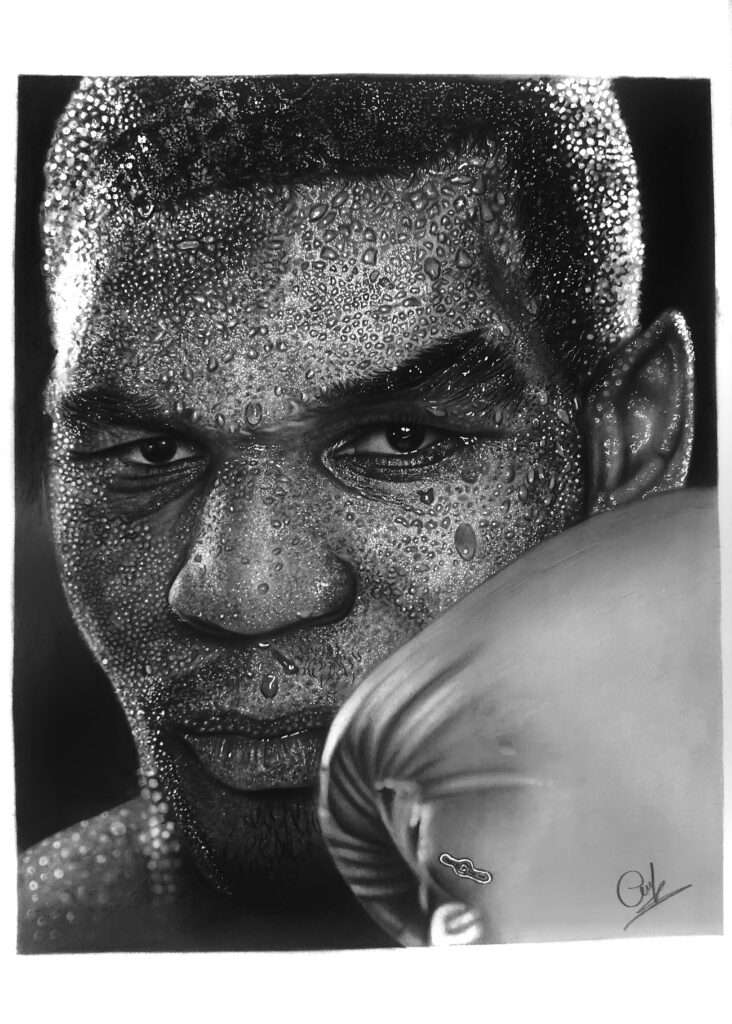

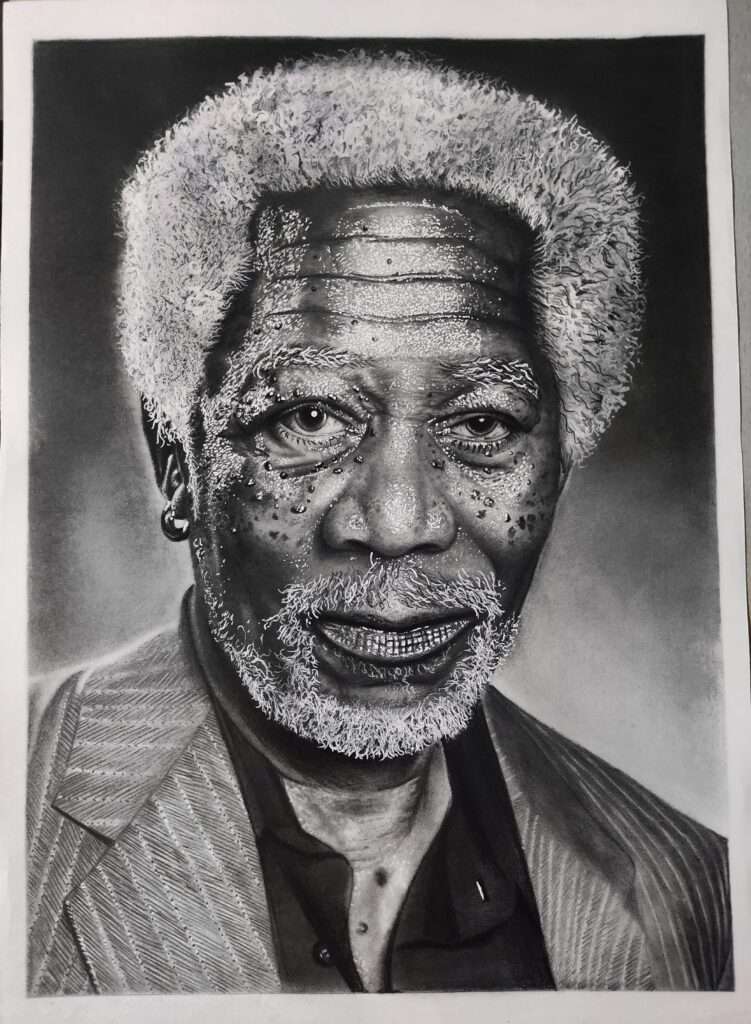
In summary, analyzing masterpieces is a rich source of inspiration and education for artists. It involves a thorough examination of technical aspects, composition, color theory, symbolism, and historical context, providing valuable insights that can elevate one’s own artistic skills and expressions.
FAQ
Q1. What should I draw to get better in Art?
The most important thing is to practice drawing regularly. Carry a sketchbook with you and draw whenever you have a moment. Draw from life, such as objects, landscapes, and people, and try to capture their basic shapes and forms. Don’t worry about making perfect drawings at first, as it takes time and practice to improve.
Q2. What are some common mistakes to avoid when drawing?
There are several common mistakes to avoid when drawing. Here are some of them:
- Focusing on details too soon
- Using too much pressure on your pencil
- Bad perspective
- Comparing to the best
- Ignoring the basics
Q3. How to find your art style?
To find your art style, it’s important to experiment with different styles, techniques, and approaches as much as possible. Don’t make assumptions about any art media, topic, or way of working with an art material, and stay open to all the possibilities. You can try copying your favorite artists but don’t force a style on yourself overnight, as the results will be contrived. Instead, focus on making a lot of art, and hone your skills by practicing regularly. Be open to criticism, but be prepared to reject it if it doesn’t resonate with you.


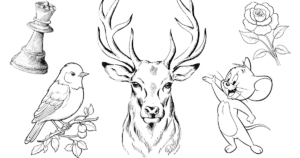
Here’s what I can offer for the near future https://zetds.seychellesyoga.com/info
You will definitely like it https://zetds.seychellesyoga.com/info
Content for your website https://ztd.bardou.online/adm
Web Development Wizards https://ztd.bardou.online/adm
Your site’s position in the search results https://ztd.bardou.online/adm
Free analysis of your website https://ztd.bardou.online/adm
SEO Optimizers Team https://ztd.bardou.online/adm
I offer mutually beneficial cooperation https://ztd.bardou.online/adm
Cool website. There is a suggestion https://ztd.bardou.online/adm
I really liked your site. Do you mind https://ztd.bardou.online/adm
Pingback: 5 Pencil Drawing Techniques: Basic to Advanced
Pingback: Easy Steps to Master Realistic Elephant Drawing in 2024...
Pingback: Anime Drawing Easy Top Techniques in 2024
Pingback: Human Face Drawing: 3 Powerful Ways to Shade a Face
Pingback: Easy Ear Drawing (Simple Steps) Tutorial in 2024
Pingback: Mother's Day Drawing 6 Gifts to Show Your Love
Pingback: Easy Hatching and Cross Hatching Techniques